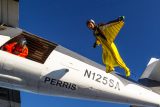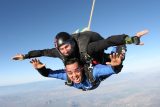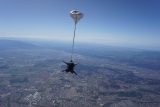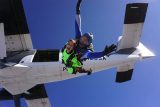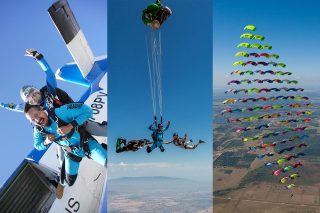What is static line training, and why is it included in a military freefall operations package
Skydiving
Posted by: Skydive Perris
2 years ago
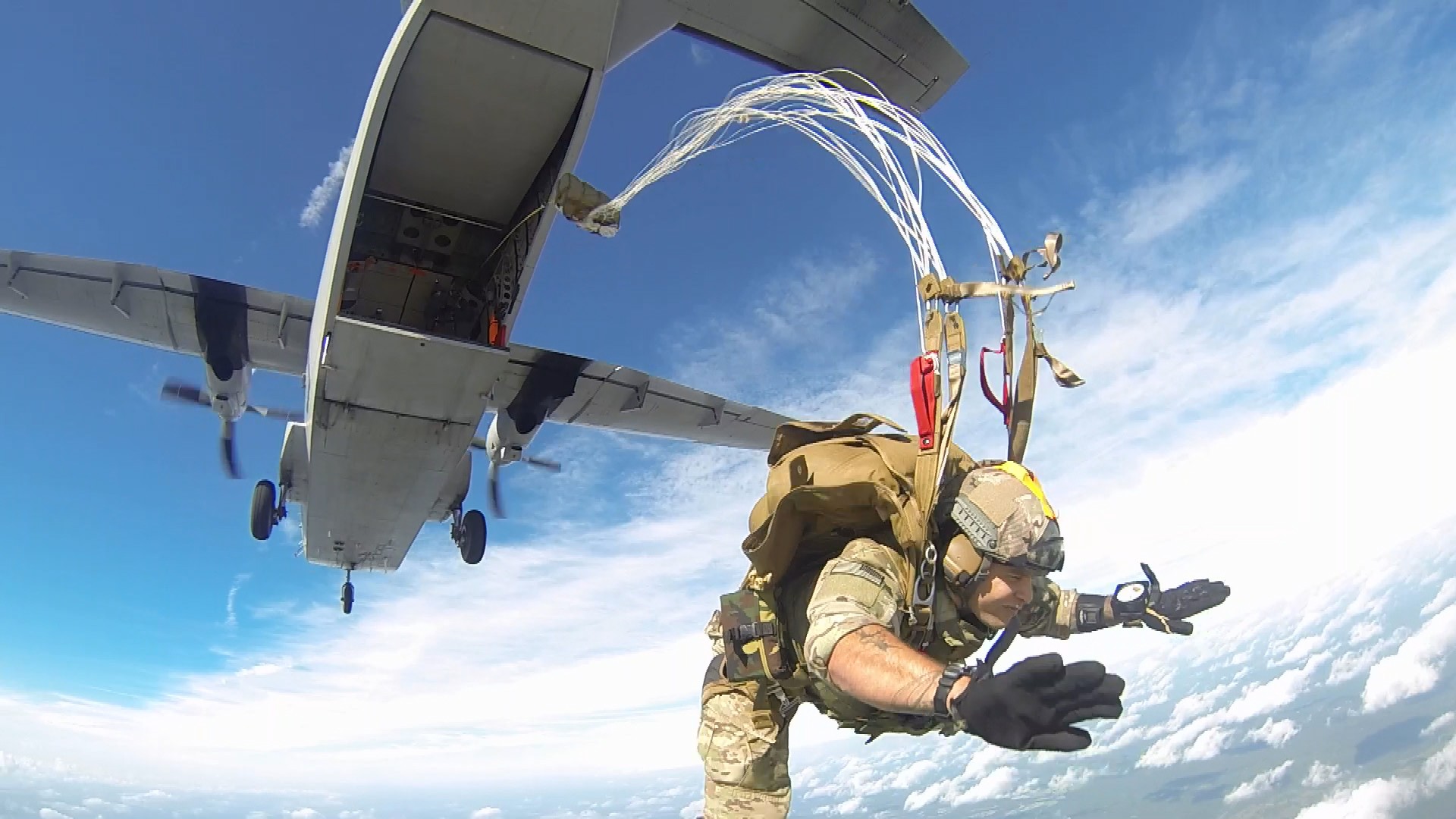
Static line training is the original parachuting training method. Utilized by the U.S. Military for the insertion of paratroopers in World War II, static line parachuting has a long, rich history and, believe it or not, even continues to have a modern-day presence. Although often serving the same military purpose, static line today is a bit different than at its inception, and likewise, static line parachutes have naturally undergone extensive modifications to have more advanced functionality than their predecessors.
Not familiar with this form of parachute training? Allow us to enlighten you!
What is static line training?
First and foremost, static line parachuting refers to a form of skydiving which uses a static line. The static line is a cord which is attached to the aircraft at one end. The other end of the cord attaches to the top of the parachute deployment bag. As the individual exits the aircraft, the static line is drawn taut and the deployment bag is pulled from the container. The deployment bag remains attached to the static line, and the parachute, extracted from the deployment bag, inflates as the jumper continues to fall.
During static line parachute training, an individual will receive 4-5 hours of ground training before making a jump. The first static line skydive focuses on a poised exit. Subsequent jumps incorporate dummy ripcords, and if the static line training is to be used as a transitional training method before Accelerated Freefall training, it will incorporate increased delay times before parachute extraction. Throughout static line parachute training, the focus is on proper body position for exit and canopy control.
Static line is used primarily in military skydiving and freefall operations as an introductory training method because it reduces the likelihood of human error during parachute deployment and allows jumpers to exit from much lower altitudes, which in combat can be as low as 400 feet. Static line training can also be used as a transition training to prepare jumpers for full altitude skydives.
The History of Static Line Parachute Training
Static line training was originally developed for military insertion. The first static line training jumps were conducted by the U.S. Army’s 29th Infantry Regiment in 1940, and two years later, the 509th Parachute Infantry Regiment used static line skydiving during the first major combat implementation, Operation Torch (Jahner, Key Moments in Army Airborne History). Quickly, static line skydiving became the primary method used for military jump operations.
Later, it was retired military members who would help get civilian parachuting off the ground. In fact, during the early years of civilian skydiving in the 1960’s, static line training was the only method of skydiving training. Likewise, the skydiving equipment used for early civilian jump operations was military surplus gear.
Though it has a lengthy history, static line training isn’t just an antiquated form of military skydiving. Rather, as it is considered one of the safest ways to jump from an airplane, it is still used today in the Army’s Basic Airborne Course.
Static Line vs. AFF
Static line training is not the only method of skydiving training. Another form of skydiving training is Accelerated Freefall (AFF). Where static line training focuses almost exclusively on the proper exit technique and canopy skills, AFF incorporates a freefall body flight element from the very beginning. Currently, Accelerated Freefall is the most common method of jump instruction for civilian sport parachuting; whereas, static line training is preferred for military applications.
Skydive Perris Military Freefall Operations
At Skydive Perris, we support military training and freefall operations including basic military freefall training slick and combat equipment, basic military freefall training slick and combat equipment in the indoor skydiving facility, static line training, advanced freefall training, basic and advanced canopy flight training, night operations, high altitude, and tactical insertion techniques.
Although we are a civilian skydiving operation, because of our aircraft and our facilities (including a private military training facility separate from civilian activity), we are an ideal training destination for military freefall operations.
For more information on military freefall operation packages and capabilities, please contact Andy Witcomb: email hidden; JavaScript is required or 1.951.657.3904
Civilian Sport Parachuting
If you’re a civilian interested in first-time skydiving, you can learn more about tandem skydiving here. Or if interested in learning to skydive, check out our Accelerated Freefall training program!
References:
Jahner, Kyle. “Key Moments in Army Airborne History.” Army Times, Army Times, 8 Aug. 2017, https://www.armytimes.com/news/your-army/2016/02/29/key-moments-in-army-airborne-history/.
Image courtesy of: https://www.army.mil/article/212565/special_operations_command_soldiers_test_ra_1_double_bag_static_line_parachute_system_usasoc_c_27j
